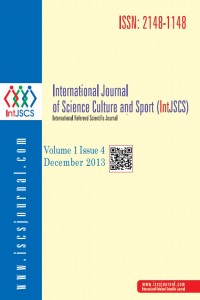Öz
This study aims to explore the usage, the formal and functional transformation of minarets in contemporary mosque architecture in Turkey, through a survey of the selected cases. The selected cases are the outstanding examples of Turkish contemporary mosque architecture. Their architects are innovative in their design decisions and displayed their own design approach and interpretation outside the main stream contemporary mosque design in Turkey. In this study, six mosques for every decade beginning from 1960’s are analyzed in terms of their general architectural features, the usage and interpretation of minarets in their designs. Throughout the selected cases, the modification of forms and functions are studied and compared with the pre-modern ones as well as with each other. The changed forms and functions of minarets and the introduction of new ideas to their design are also discussed. By this way, a general evaluation regarding the developments and progress in contemporary mosque architecture in Turkey is proposed with reference to comparative results. On this basis, this study demonstrates that the main elements, organization schemes and planning setups of Classical Ottoman Mosque are still preserved in the selected mosque examples. The novelty brought to their design is basically the usage of modern materials and techniques and a formal exploration of mosque design. This study claims that, architects of contemporary mosques in Turkey are in search for newness and innovation in their designs as a contribution for the progress of mosque architecture. This search for innovation has mostly leaded the architects to some atypical forms, although in some cases traditional solutions and standpoints have taken place.
Anahtar Kelimeler
Kaynakça
- Bloom J (2001). “Creswell and the Origins of the Minaret”. Muqarnas, vol 8.
- Creswell KAC (1926). “The evolution of the minaret with special reference to Egypt”. Burlington Magazine, no. 48.
- Erzen J, Aydan B (1996). “Kinali Island Mosque, Istanbul ”, “The Parliament Mosque, Ankara”, and “TEK Mosque, Golbasi, Ankara”. Architecture of the Contemporary Mosque. İ. Serageldin and J. Steele ed.s. London: Academy Editions.
- Grabar O (1973). The Formation of Islamic Art. London: Yale University Press. Harper D (2010). "Minaret". Online Etymology Dictionary. [Online] Available: http://www.etymonline.com/index.php?term=minaret.
- Hillenbrand R (1994). Islamic Architecture: Form, Function and Meaning. New York: Columbia University Press.
- Johns J (1999). “The „House of Prophet‟ and the Concept of the Mosque”. Bayt Al-Maqdis: Jerusalem and the Early Islam. Jeremy Johns ed. Oxford: Oxford University Press.
- Johnson P (1979). Civilizations of the Holy Land. London: Weidenfeld and Nicolson.
- Norberg-Shulz C (1986). “The Architecture of Unity”. Architecture Education in the Islamic World - Proceedings of Seminar Ten in the Series of Architectural Transformations in the Islamic World. Sponsored by Aga Khan Award for Architecture. Singapore: Concept Media.
- Peker AU (1999). “The Historical Evolution of the Turkish Mosque Architecture". Proceedings of the Symposium on Mosque Architecture, vol. 2B. College of Architecture and Planning. King Saud University.
Öz
.
Kaynakça
- Bloom J (2001). “Creswell and the Origins of the Minaret”. Muqarnas, vol 8.
- Creswell KAC (1926). “The evolution of the minaret with special reference to Egypt”. Burlington Magazine, no. 48.
- Erzen J, Aydan B (1996). “Kinali Island Mosque, Istanbul ”, “The Parliament Mosque, Ankara”, and “TEK Mosque, Golbasi, Ankara”. Architecture of the Contemporary Mosque. İ. Serageldin and J. Steele ed.s. London: Academy Editions.
- Grabar O (1973). The Formation of Islamic Art. London: Yale University Press. Harper D (2010). "Minaret". Online Etymology Dictionary. [Online] Available: http://www.etymonline.com/index.php?term=minaret.
- Hillenbrand R (1994). Islamic Architecture: Form, Function and Meaning. New York: Columbia University Press.
- Johns J (1999). “The „House of Prophet‟ and the Concept of the Mosque”. Bayt Al-Maqdis: Jerusalem and the Early Islam. Jeremy Johns ed. Oxford: Oxford University Press.
- Johnson P (1979). Civilizations of the Holy Land. London: Weidenfeld and Nicolson.
- Norberg-Shulz C (1986). “The Architecture of Unity”. Architecture Education in the Islamic World - Proceedings of Seminar Ten in the Series of Architectural Transformations in the Islamic World. Sponsored by Aga Khan Award for Architecture. Singapore: Concept Media.
- Peker AU (1999). “The Historical Evolution of the Turkish Mosque Architecture". Proceedings of the Symposium on Mosque Architecture, vol. 2B. College of Architecture and Planning. King Saud University.
Ayrıntılar
| Birincil Dil | İngilizce |
|---|---|
| Konular | Spor Hekimliği |
| Bölüm | Makaleler |
| Yazarlar | |
| Yayımlanma Tarihi | 12 Aralık 2013 |
| Yayımlandığı Sayı | Yıl 2013 Cilt 1 - Sayı 4 |


